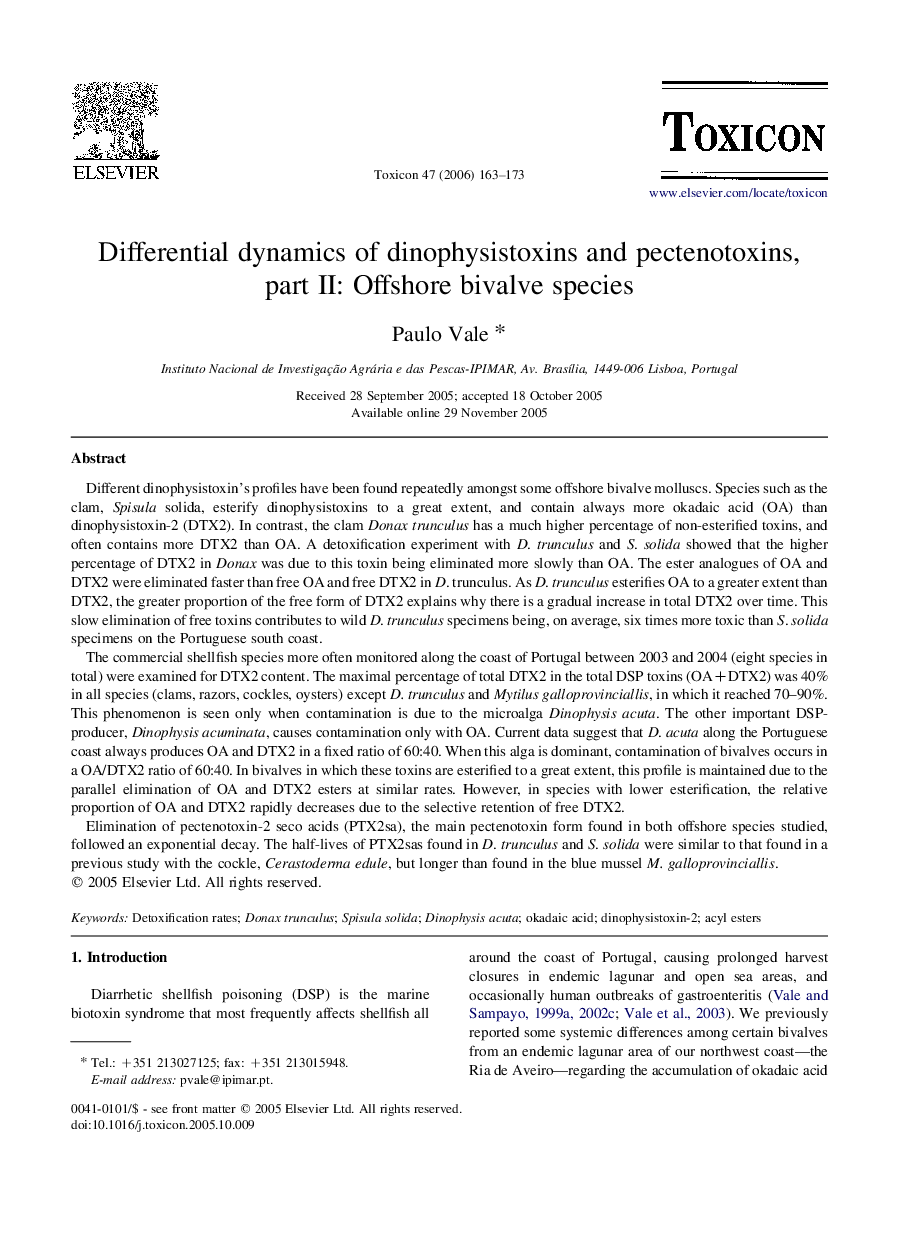| کد مقاله | کد نشریه | سال انتشار | مقاله انگلیسی | نسخه تمام متن |
|---|---|---|---|---|
| 2065962 | 1076952 | 2006 | 11 صفحه PDF | دانلود رایگان |

Different dinophysistoxin's profiles have been found repeatedly amongst some offshore bivalve molluscs. Species such as the clam, Spisula solida, esterify dinophysistoxins to a great extent, and contain always more okadaic acid (OA) than dinophysistoxin-2 (DTX2). In contrast, the clam Donax trunculus has a much higher percentage of non-esterified toxins, and often contains more DTX2 than OA. A detoxification experiment with D. trunculus and S. solida showed that the higher percentage of DTX2 in Donax was due to this toxin being eliminated more slowly than OA. The ester analogues of OA and DTX2 were eliminated faster than free OA and free DTX2 in D. trunculus. As D. trunculus esterifies OA to a greater extent than DTX2, the greater proportion of the free form of DTX2 explains why there is a gradual increase in total DTX2 over time. This slow elimination of free toxins contributes to wild D. trunculus specimens being, on average, six times more toxic than S. solida specimens on the Portuguese south coast.The commercial shellfish species more often monitored along the coast of Portugal between 2003 and 2004 (eight species in total) were examined for DTX2 content. The maximal percentage of total DTX2 in the total DSP toxins (OA+DTX2) was 40% in all species (clams, razors, cockles, oysters) except D. trunculus and Mytilus galloprovinciallis, in which it reached 70–90%. This phenomenon is seen only when contamination is due to the microalga Dinophysis acuta. The other important DSP-producer, Dinophysis acuminata, causes contamination only with OA. Current data suggest that D. acuta along the Portuguese coast always produces OA and DTX2 in a fixed ratio of 60:40. When this alga is dominant, contamination of bivalves occurs in a OA/DTX2 ratio of 60:40. In bivalves in which these toxins are esterified to a great extent, this profile is maintained due to the parallel elimination of OA and DTX2 esters at similar rates. However, in species with lower esterification, the relative proportion of OA and DTX2 rapidly decreases due to the selective retention of free DTX2.Elimination of pectenotoxin-2 seco acids (PTX2sa), the main pectenotoxin form found in both offshore species studied, followed an exponential decay. The half-lives of PTX2sas found in D. trunculus and S. solida were similar to that found in a previous study with the cockle, Cerastoderma edule, but longer than found in the blue mussel M. galloprovinciallis.
Journal: Toxicon - Volume 47, Issue 2, February 2006, Pages 163–173